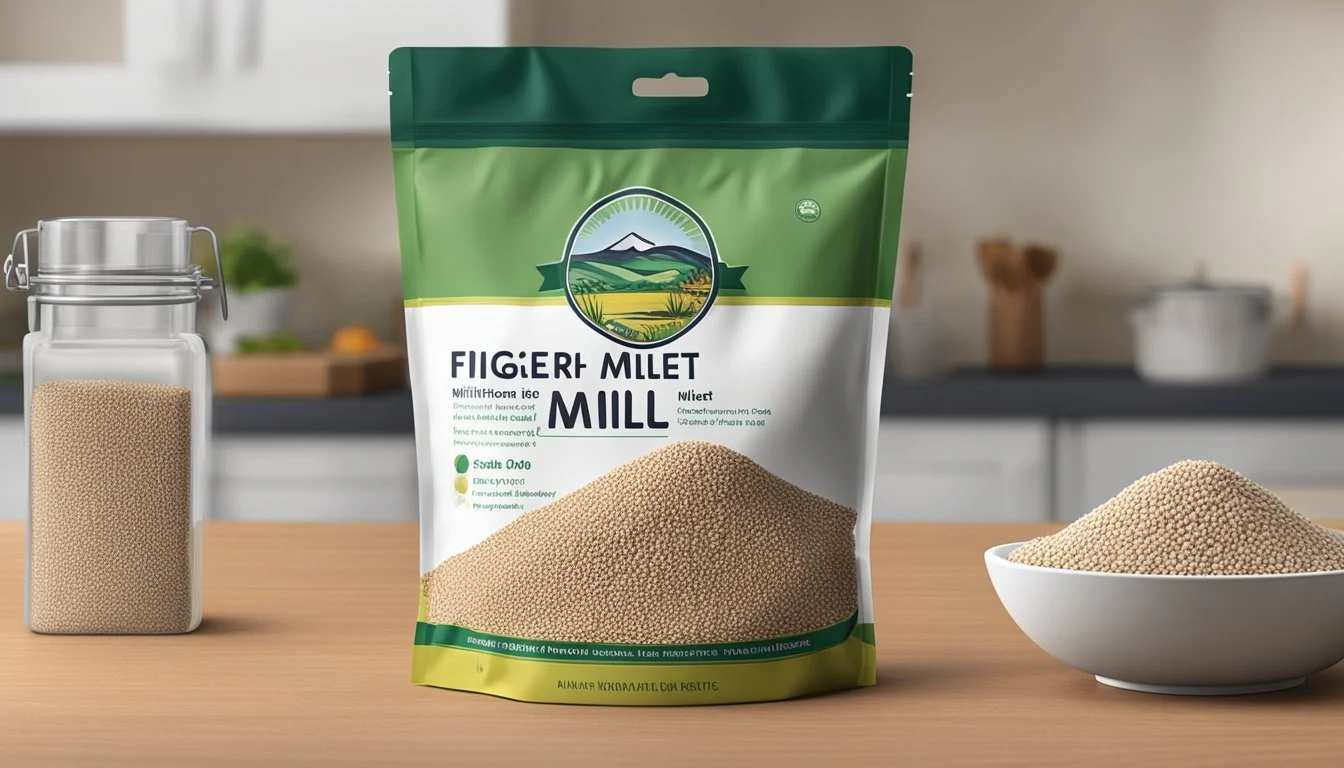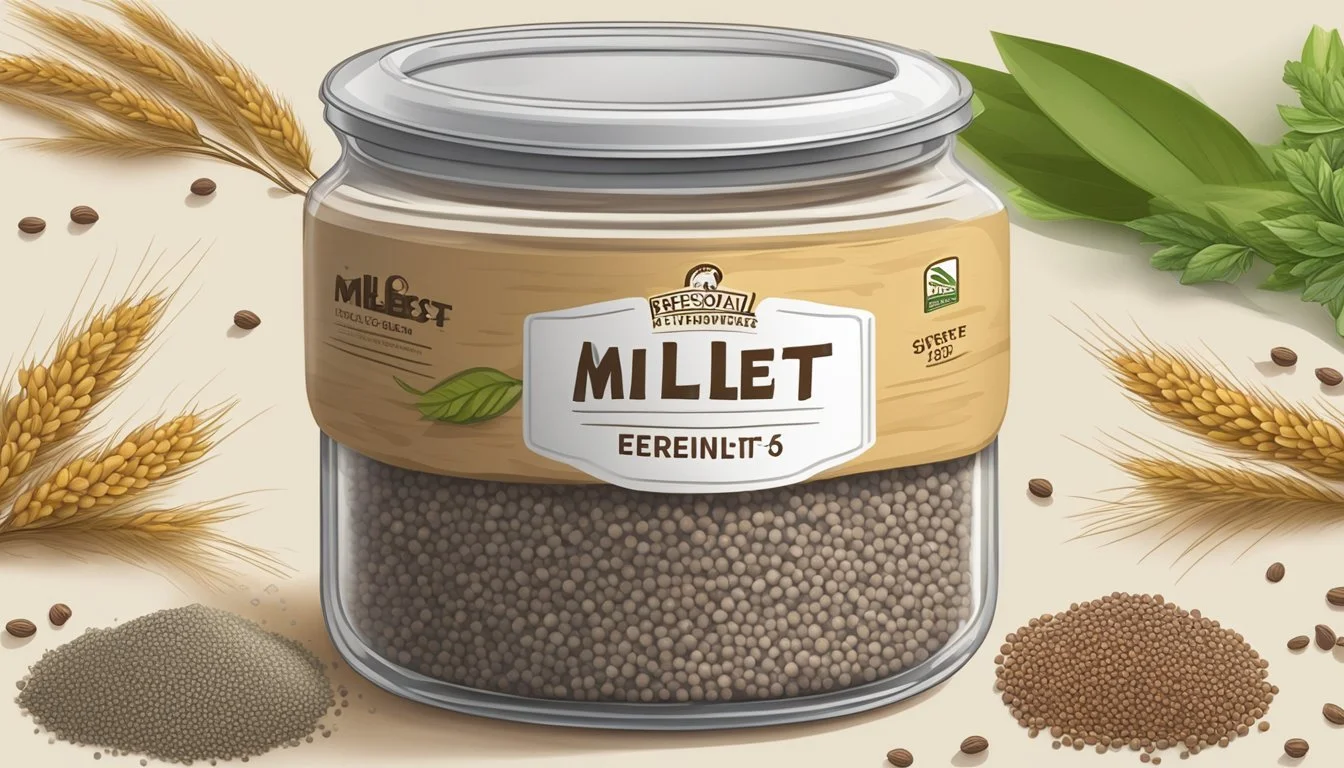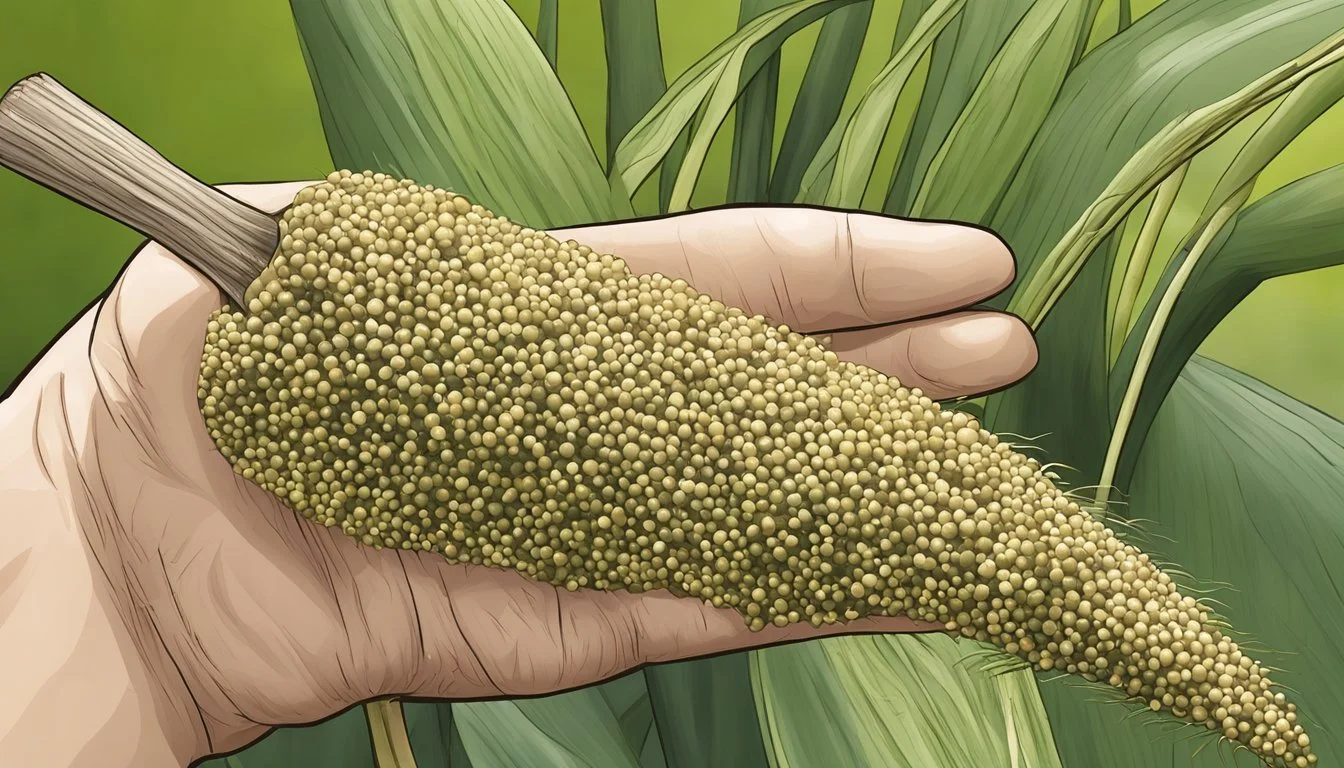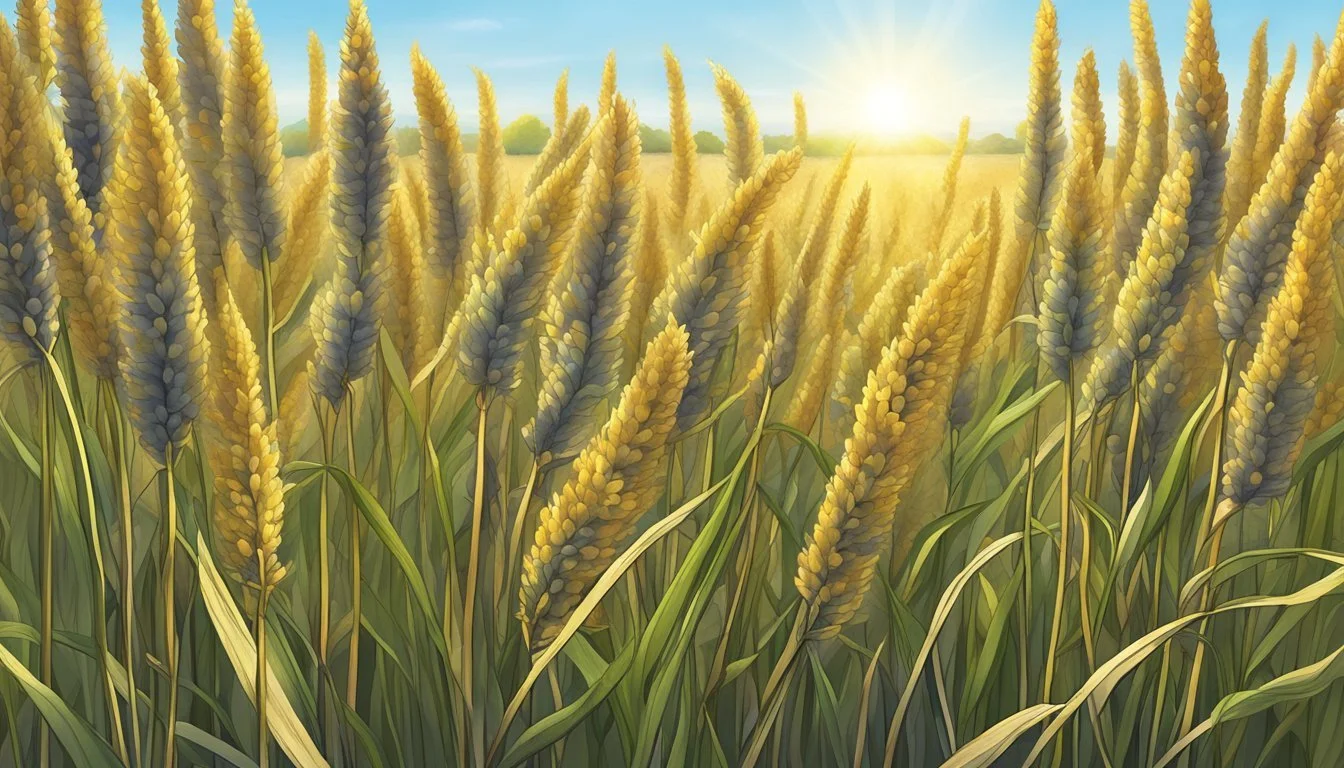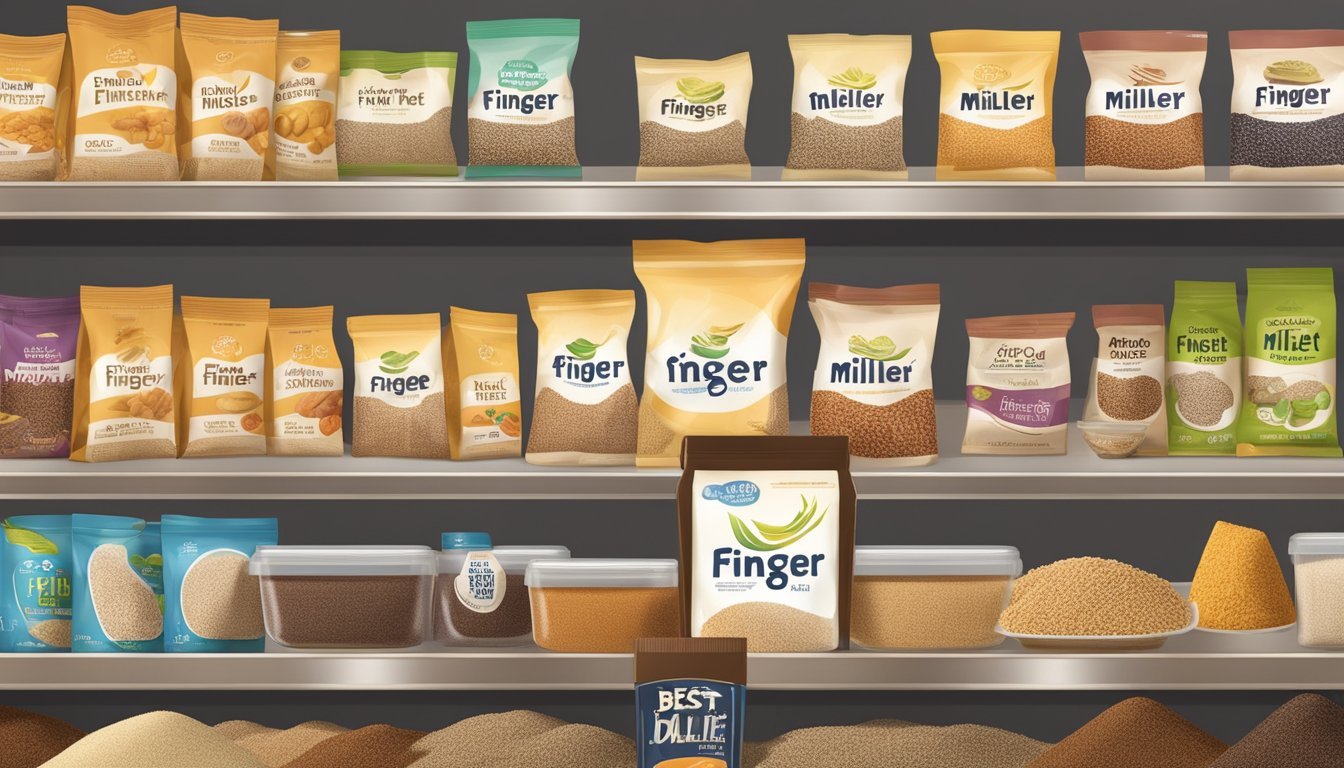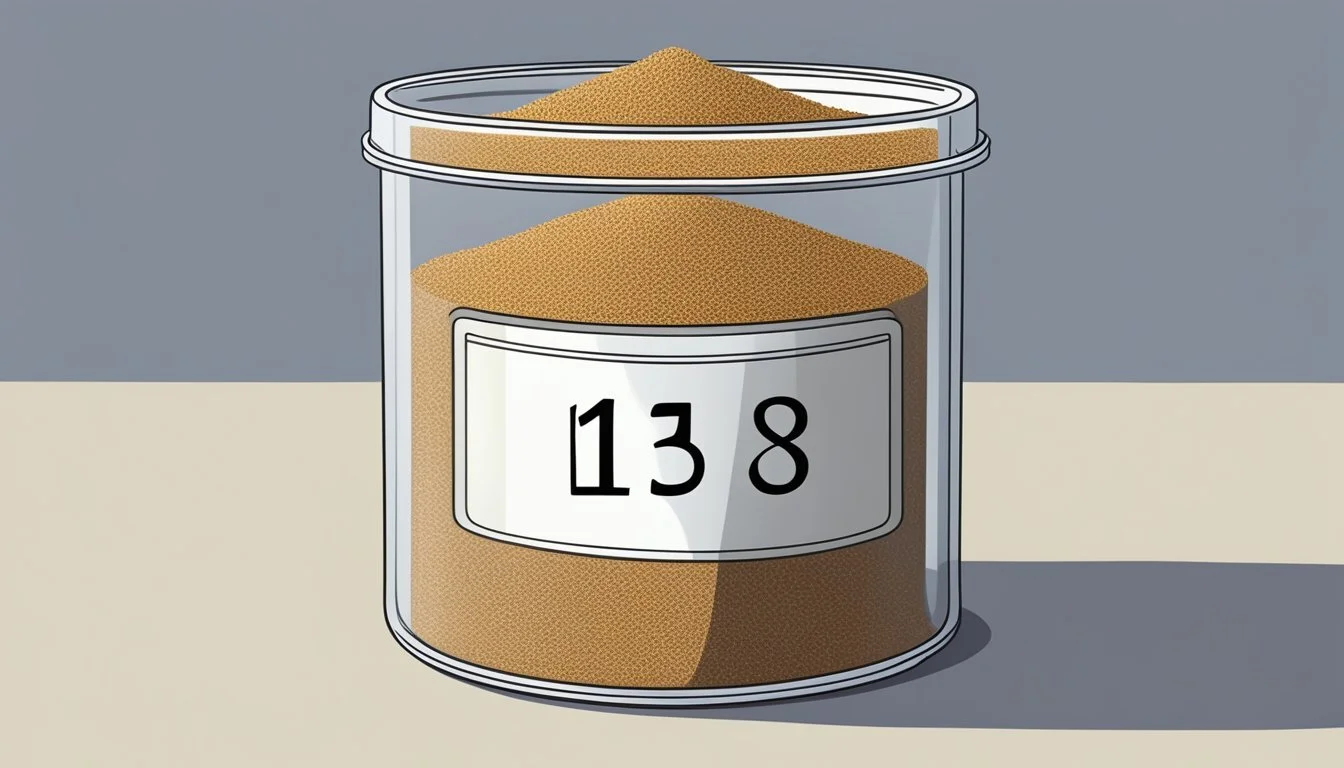How Long Does Finger Millet Last?
Shelf Life and Storage Insights
Finger millet is a highly nutritious grain known for its long shelf life, making it a valued staple in food storage plans. Its remarkable longevity can be attributed to the grain's hardy structure and low moisture content, both of which inhibit the growth of mold and pests. Proper storage conditions significantly influence its durability, enabling finger millet to maintain its quality over an extended period. As such, it is a reliable source of sustenance that can be kept in reserve for times of need.
The specific lifespan of finger millet can range from several months to a few years depending on various factors, including the storage environment and packaging. In an optimal setting, finger millet is capable of remaining edible well beyond the time frame of many other grains, underpinning its role in food security and nutrition. Recognized for its high calcium content and health benefits, such as supporting bone health, it is a versatile grain that can be incorporated into numerous diets.
Origins and Varieties
Finger millet, a highly adaptable and nutritious grain, has a diverse geographic distribution and includes several key varieties. It is an essential crop with significant cultural and economic value in several regions.
Geographical Distribution
Africa and India are the primary regions where finger millet originates and is widely cultivated. In Africa, it is often associated with the highlands of Ethiopia and Tanzania, intimately linked with the agricultural history and food security of the region. Its presence in India dates back to at least 1800 BCE, with archaeological evidence pointing to its ancient use. Besides these regions, finger millet is also commonly found across Asia, highlighting its adaptability to different climates.
Types of Millet
Millet encompasses a range of grains closely related to finger millet, such as pearl millet, sorghum, proso millet, and foxtail millet. Notably, each variety has distinct properties:
Pearl millet (Pennisetum glaucum): Thrives in the driest and hottest areas, known for its high nutritional value.
Sorghum (Sorghum bicolor): Resilient against drought and heat, used for grain, syrup, and fodder.
Proso millet (Panicum miliaceum): Adapts well to a variety of climates, primarily grown for grain.
Foxtail millet (Setaria italica): Has the longest history of cultivation among millets, used in food, fodder, and for controlling erosion.
Collectively, these grains, including finger millet, often branded as "Lost Crops of Africa," are gaining attention for their potential to combat food insecurity and for their role in sustainable agriculture.
Nutritional Profile
Finger millet, known for its high nutritional value, is a rich source of various essential nutrients contributing to a balanced diet. This section focuses on its macronutrient content and the array of vital minerals and vitamins it encompasses.
Macronutrient Content
Finger millet is an excellent source of protein, vital for muscle repair and growth. It is especially noteworthy for its content of the amino acid methionine, which is lacking in the diets of millions who rely on starchy staples. Here is a breakdown of its macronutrient profile:
Protein: Essential for bodily functions; finger millet contains 7-10% protein.
Fiber: High in dietary fiber, aiding in digestion and cardiovascular health.
Carbohydrates: A significant portion of the grain is complex carbohydrates.
Vital Minerals and Vitamins
This grain is packed with minerals and vitamins that play crucial roles in bodily functions:
Iron: Finger millet is a good source of iron, important for preventing anemia.
Calcium: It boasts a high calcium content, beneficial for bone health and strength.
Magnesium and Phosphorus: These minerals are integral for maintaining a healthy nervous system and strong skeletal structure.
Manganese: Helpful in antioxidant defense and metabolism.
B Vitamins: Includes B6 and folic acid, supporting metabolism and reducing risk of birth defects.
Antioxidants: Rich in phenolic compounds, known for their antioxidant properties.
Finger millet's composition of fiber, minerals, vitamins, and antioxidants underscore its position as a nutritious staple food, fit to support various health benefits.
Health Benefits
Finger millet, also known as ragi, is rich in nutrients and offers several health advantages, particularly for those requiring a gluten-free diet. It serves as an excellent alternative grain for individuals with celiac disease or gluten intolerance.
Finger millet is a significant source of calcium, vital for bone health and development. It also contains iron, which is beneficial for maintaining healthy hemoglobin levels, and other minerals like potassium and phosphorus.
Digestive health is another area where finger millet contributes positively. Its high dietary fiber content aids in regular bowel movements, reduces constipation, and improves overall gut health. Fiber-rich diets are linked to a lower risk of developing gastrointestinal problems.
The presence of antioxidants and phytochemicals in finger millet supports immunity. These compounds help combat oxidative stress and protect the body against infections and diseases.
Nutrients in Finger Millet Benefits Calcium Bone health and development Iron Healthy hemoglobin levels Dietary Fiber Improved digestive health Antioxidants Enhanced immunity
Finger millet also contains essential amino acids, which are the building blocks of proteins necessary for cell repair and growth.
In summary, finger millet contributes to a robust dietary profile with its gluten-free nature, bone-strengthening minerals, digestive health support, and immune-boosting properties. It's a valuable addition for those looking for a nutritious grain that supports overall well-being.
Culinary Uses
Finger millet, known for its versatility, plays a significant role in both traditional and modern culinary practices. Rich in calcium and easily storable, it serves as a staple ingredient in a variety of dishes.
Traditional Foods
In traditional cuisines, finger millet often appears as a foundational component in porridge, a comforting and nutritious food prevalent in many cultures. Its flour is also a preferred ingredient in the making of flatbreads and bread, offering a gluten-free option with a distinct nutty flavor. Regions with a history of finger millet cultivation use the grain to produce local beer and malt, reflecting its integral place in social and ceremonial occasions.
Modern Applications
Today, finger millet finds its way into contemporary kitchens through inventive salads, incorporating the grain for its texture and nutritional value. Baked goods benefit from its wholesome qualities, with finger millet flour (how long does millet flour last?) contributing to healthier versions of cakes and cookies. For health-conscious consumers, it serves as a nutritious alternative in breakfast cereal and soups, accommodating the demand for gluten-free and nutrient-dense foods. Even in the beverage industry, finger millet is used to create artisanal beers, carrying on the traditional aspect of millet-based alcoholic beverages.
Agriculture Practices
Successful agriculture practices are pivotal for the longevity of finger millet, from cultivation to harvesting. These practices ensure that crops can withstand environmental stresses and yield a good harvest.
Cultivation
Finger millet requires well-draining soil to thrive, making the selection of the right planting site critical. To prepare the field for planting, farmers should loosen the soil to a depth of about 3-4 inches and ensure it is free of weeds. In terms of sowing, seeds are typically sown directly into the ground.
Row spacing: For efficient use of space and resources, finger millet should be planted approximately 1-2 inches apart.
Soil coverage: Once sown, the seeds need to be covered with a thin layer of soil to provide the necessary darkness for germination.
Irrigation plays a limited role, as finger millet is relatively drought-resistant. Still, adequate rainfall is beneficial during the initial stages of growth. However, care must be taken to avoid waterlogging.
Harvesting Methods
The harvesting stage is a crucial phase in the life cycle of the finger millet plant, determining the quality and longevity of the yield.
Maturity: Finger millet typically matures within 4 to 5 months of planting, after which it can be harvested.
Techniques: To harvest, the crop should be cut above ground level. This can be done manually or with tools depending on the scale of operation.
After cutting, the seed heads containing the grains are dried in the sun for 2 to 3 days. Threshing is the next step, where bullocks or sticks may be used to separate the seeds from the rest of the plant. Proper drying and threshing are essential to minimize losses and ensure seed longevity.
When these agriculture practices are executed with skill and care, they maximize the yield and potency of the crops and contribute to a biodiversity that sustains both the ecosystem and agricultural livelihoods.
Storage Guidelines
Proper storage of finger millet is crucial for maximizing its shelf life and maintaining quality. This entails careful management of environmental factors and selecting appropriate containers.
Environmental Factors
Finger millet's longevity is highly influenced by temperature, moisture, and light exposure. To ensure a prolonged shelf life, it should be stored at a consistent, cool temperature, ideally between 50-70°F (10-21°C). Excess moisture can lead to mold growth, so a low-humidity environment is necessary. It's also important to protect millet from direct light, as this can degrade the grain's quality over time.
Shelf Life in Different Environments:
Pantry: Up to 6 months at cool, dry conditions
Refrigerator: 8 months to 1 year
Freezer: 1-2 years for optimal freshness
Container Selection
To minimize oxygen exposure, millet should be stored in airtight containers. This reduces the risk of oxidation, which can affect taste and nutritional value. Suitable containers include tightly sealed glass or food-grade plastic containers, vacuum-sealed bags, and #10 cans for long-term storage.
Container Recommendations:
Airtight glass jars: Ideal for short-term pantry storage
Vacuum-sealed bags: Best for freezing and keeping oxygen out
Food-grade buckets with gamma seals: Optimal for bulk, long-term storage in pantries
By adhering to these guidelines, preservation of finger millet's quality is achievable, extending its usability in a variety of dishes.
Spoilage Indicators
When determining if finger millet has gone bad, several indicators can be assessed for spoilage. Texture and flavor changes are critical. Spoiled millet often presents a dry and dusty texture, indicating a loss of moisture which is essential for maintaining millet's freshness.
Visual inspection is key in identifying spoilage:
One should look for mold growth, characterized by visible spots or color transformations on the millet grains.
The presence of insects or pests within the millet serves as another sign of contamination and potential spoilage.
Smell plays a significant role:
A rancid odor is unmistakable and indicates that the millet's natural oils have begun to degrade, which is a direct sign of spoilage.
Millet should have a neutral smell, and any sour or off odors are indicative of spoiled grains.
Taste should only be used as a last resort:
If millet has a sour or abnormal taste, it should not be consumed.
Lastly, while pH and ash content measurements are more scientific indicators and not easily assessed at home, significant changes in these could also reflect degradation.
In summary, the millet's texture, presence of mold, smell of rancidity, and off-flavors are clear and dependable indicators of spoilage. Regular checks for these signs can prevent consuming spoiled millet and ensure food safety.
Comparative Longevity
The longevity of finger millet compared to other grains is notable due its hardiness and the quality of its seeds that can be stored for extended periods.
Millet vs Other Grains
In comparison to other common grains such as rice, wheat, maize, barley, rye, and oats, millets, including finger millet, show superior shelf stability. These cereals and legumes often have shorter shelf lives due to their higher oil content, which can lead to rancidity. Finger millet, on the other hand, is a nutritious grain with a low fat content, which contributes to its longer storage potential.
Rice and wheat: Typically remain good for 6 months to 1 year when properly stored.
Barley and oats: Can last up to 2 years under ideal conditions.
Rye and maize: Have shorter shelf lives of around 6 months to 1 year.
By contrast, finger millet has been known to stay fresh for up to 10 years when stored in optimal conditions, without significant loss in germination quality. This makes finger millet an extremely versatile and resilient food source, particularly in regions prone to food insecurity.
Different Millet Varieties
Different types of millets, including pearl millet, proso millet, and foxtail millet, may have varying shelf lives, but generally are known for their extended longevity compared to more common grains. Here's how they generally compare:
Pearl millet: Can last 6 months to a year when stored properly.
Proso millet, Foxtail millet and Finger millet: Can have a shelf life that exceeds 2 years.
Cooked millet, like cooked forms of other grains, has a short shelf-life and is generally safe to consume within a few days when refrigerated. When it comes to types of millet, finger millet stands out for its long shelf life, which, combined with its robust nature and high nutritional value, makes it a reliable staple in many diets.
Commercial Aspects
The commercial viability of finger millet spans various markets due to its enduring shelf life, nutritional benefits, and adaptability to extreme climates. This grain has seen a varied reception in terms of global trade and cultural importance.
Market Trends
Finger millet, primarily grown in regions of East Africa and Asia, including Nepal, has a stable market presence due to its hardy nature. In Africa, it is often marketed as African millet, and despite its reputation as a "poor person's crop," it has seen a resurgence due to its nutritional attributes. Asian markets recognize finger millet for its cultural significance and consistent demand. However, in Europe, its market is relatively small but growing, as awareness of its health benefits increases internationally.
Current Market Presence:
Africa: Strong in local markets but limited in commercial exports.
Asia: Consistent demand, notably in countries like Nepal.
Europe: Growing niche market focused on health foods.
Trade Dynamics:
Local trade in African and Asian countries.
International trade mainly as a health food in European markets.
Cultural Significance
Finger millet holds substantial cultural significance in the regions where it is cultivated, influencing its commercial demand. In countries like Nepal, finger millet is deeply integrated into traditional diets, securing its place in the market. The grain is esteemed for its resilience and is often associated with subsistence farming, which has impacted its reception in global markets.
Nepal: Integral to traditional diets, impacting steady local demand.
Cultural Perception: Viewed mainly as a subsistence crop, influencing commercial potential and trade opportunities.
Sustainability and Environmental Impact
Finger millet, known for its hardiness, thrives in conditions where many crops fail. Resilience is a cornerstone characteristic of finger millet, making it a valued crop in the sphere of sustainable agriculture. Unlike quinoa, which has gained massive popularity but is predominantly grown in South America, finger millet can be cultivated in various parts of the world, reducing transportation impacts and supporting local ecosystems.
In terms of environmental impact, it is noteworthy that finger millet demands considerably less water compared to more traditional grains like wheat and rice. This low water requirement contributes to finger millet's suitability for growth in arid regions where water scarcity is a concern.
Water usage
Crop Water Footprint (liters/kg) Rice ~2,500 Wheat ~1,650 Finger Millet ~300
Furthermore, finger millet shows a strong resistance to waterlogging, making it a reliable option in regions prone to heavy rainfall. When considering intercropping, finger millet pairs well with drought-tolerant legumes like cowpea, which enriches the soil with nitrogen, enhancing soil fertility and farm productivity.
Moving on to biodiversity, finger millet's compatibility with a range of companion crops like plantain supports diverse farming systems. This diversity helps to sustain various insects and microorganisms essential for a balanced ecosystem.
The minimal need for chemical fertilizers or pesticides in its cultivation further minimizes the environmental footprint of finger millet. Its cultivation reinforces the move towards more ecologically friendly farming practices, solidifying its role as an ally in the fight against climate change and the push for sustainable food systems.
Processing and Technology
Finger millet processing employs various technologies to convert raw grains into forms that are suitable for consumption and long-term storage. These techniques not only preserve the cereal crop but also enhance its flavor and appearance, making it a versatile ingredient in the food industry.
Milling Techniques
Milling is a critical processing step for finger millet, transforming the tough grain into fine flour. In this process, the grains undergo hulling to remove the outer husk, which is then followed by pulverizing it into powder. There are different milling techniques, including:
Stone Grinding: A traditional method that preserves nutrients but has lower efficiency.
Roller Milling: Offers higher efficiency and finer flour but may cause higher nutrient loss compared to stone grinding.
Each method has its implications on the flour's quality and the final product's taste and texture.
Industry Innovations
The food industry is continuously innovating to improve finger millet processing:
Enrichment: Techniques like fortification are being applied, where milled flour is enriched with vitamins and minerals to combat nutritional deficiencies.
Machinery Advancements: New machines are designed to minimize nutrient loss during milling and speed up production for higher yields.
Brewing: Finger millet's sturdiness as a cereal crop makes it an excellent ingredient in brewing, where processing technologies are adapted for fermenting the grain.
These innovations enhance the grain's accessibility and can extend its shelf life, crucial for food security in regions heavily reliant on finger millet.
Finger Millet in Traditional Medicine
In the landscape of traditional medicine, finger millet has carved a niche for itself, predominantly in African traditions, where it is esteemed for its medicinal uses. It is widely considered a strength-giving and disease-preventing staple, embodying both nutrition and therapeutics.
Medicinal Uses:
Finger millet is known principally for its high calcium content, which is pivotal in preventing osteoporosis and bolstering bone health. Its high fiber content also aids in digestion and can assist in the control of blood sugar levels, making it beneficial for diabetics.
Traditional Remedies:
From the grains to the plant’s straw, various parts of the finger millet plant are utilized in home remedies. It is commonly ground into a flour and incorporated into diets to exploit its calming effects on stomach aches and reduce cholesterol levels.
African Traditions:
It has been traditionally used in porridge form as a weaning food for babies, due to its high nutritional content.
In African folk medicine, it is employed to aid lactation in nursing mothers.
Some communities use it for its supposed anti-aging properties.
The versatility of finger millet extends beyond the kitchen, being embedded in the tapestry of traditional healing practices. Its use ranges from day-to-day nutritional supplementation to more deliberate medicinal applications. This has made it an integral part of the traditional food-medicine continuum in various cultures.
Preservation and Fermentation
Finger millet boasts a notable durability in storage, largely due to its amenability to preservation through fermentation. This process not only extends the grain's shelf life but also enhances its nutritional profile.
Creating Malts and Brews
When transforming finger millet into malts or traditional brews, the first step involves soaking the grains to initiate germination. This process produces enzymes that convert starches into fermentable sugars, foundational to malt production. The malted grains can then be used to create a variety of beers and other local brews, capitalizing on the grains' inherent sugars and flavors. These beverages are prominent in several cultures that utilize traditional brewing techniques.
Utilization in Food Preservation
Fermentation serves as a pivotal method for preserving finger millet, especially in regions lacking advanced preservation technology. This biological process, which engages microorganisms such as lactic acid bacteria and yeast, not only prolongs shelf life but also increases the bioavailability of nutrients. The sequence typically entails soaking and fermenting the grains, thereby preventing spoilage and retaining quality over extended periods. Such practices are deeply rooted in tradition, often reflecting a society's resourcefulness in ensuring a stable, nutritious food source.
Legal and Safety Standards
Legal and safety standards are essential to ensuring the quality and longevity of finger millet by setting guidelines for its storage and handling to prevent contamination and bacterial growth.
Regulations
Regulations concerning finger millet encompass a range of legal requirements to maintain food safety. For instance, the Food Safety and Standards Act of 2006 in India provides specific standards for cereals like finger millet. These standards ensure that the grains meet specific quality parameters before they are considered safe for consumption. Similarly, international standards, like those established in Uganda's Draft Standard DUS DEAS 758: 2018, define specifications for finger millet grains, with different grades reflecting varying levels of quality.
Food Safety
The safety of finger millet is paramount in preventing foodborne illness. Here are some key safety expectations:
Storage: Proper storage methods must be employed to extend the shelf life of finger millet, reducing exposure to moisture and heat that can promote bacterial growth.
Contamination Prevention: Safety standards necessitate measures to prevent contamination from chemicals, microbes, or other pollutants during processing and packaging.
Specifications for Finger Millet:
Grade Requirement Grade 1, 2, 3 Must meet standard quality criteria. Ungraded Do not meet specific grade criteria but are not rejected. Reject Grade Do not qualify for human consumption according to the standard.
Sticking to these legal and safety protocols is critical for the health and well-being of consumers, and for maintaining the trust placed in food regulatory systems.
Future Outlook
Finger millet is poised for significant advancements through focused research and development initiatives. Projections indicate an expanding global market influenced by the crop's resilience and nutritional value.
Research and Development
In the realm of research, the future trends lean towards enhancing the inherent strengths of finger millet. African millet, specifically, is the subject of intense studies aimed at unlocking its genetic potential to withstand stressful environmental conditions. These studies pave the way for innovation in developing climate-resilient crops. Additionally, research into phenomics and genomics is revolutionizing our understanding of finger millet's agronomic and nutritional traits. This research is likely to contribute to the increased genetic gain of the crop, further solidifying its place as a food security solution.
Global Market Projections
The market potential for finger millet is on an upward trajectory. Recent data suggests that millets, inclusive of finger millet, are progressively being integrated into global food systems due to their nutrient profile and adaptability. This has lead to positive market projections for finger millet. With a burgeoning demand for healthy and sustainable food sources, African millet is well-positioned to gain a significant market share. Present trends and future projections indicate an increased awareness and preference for finger millet that is likely to invigorate its market presence.



